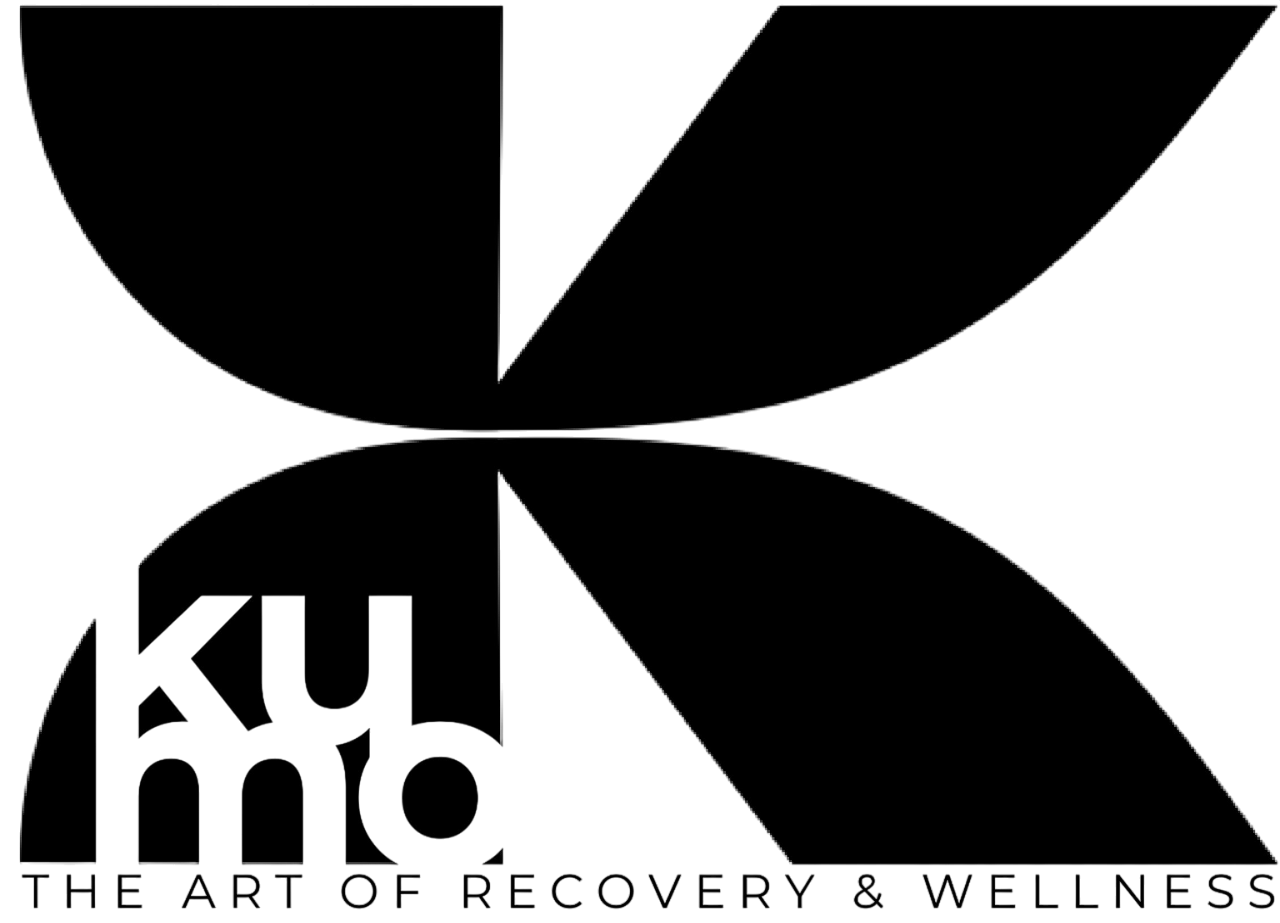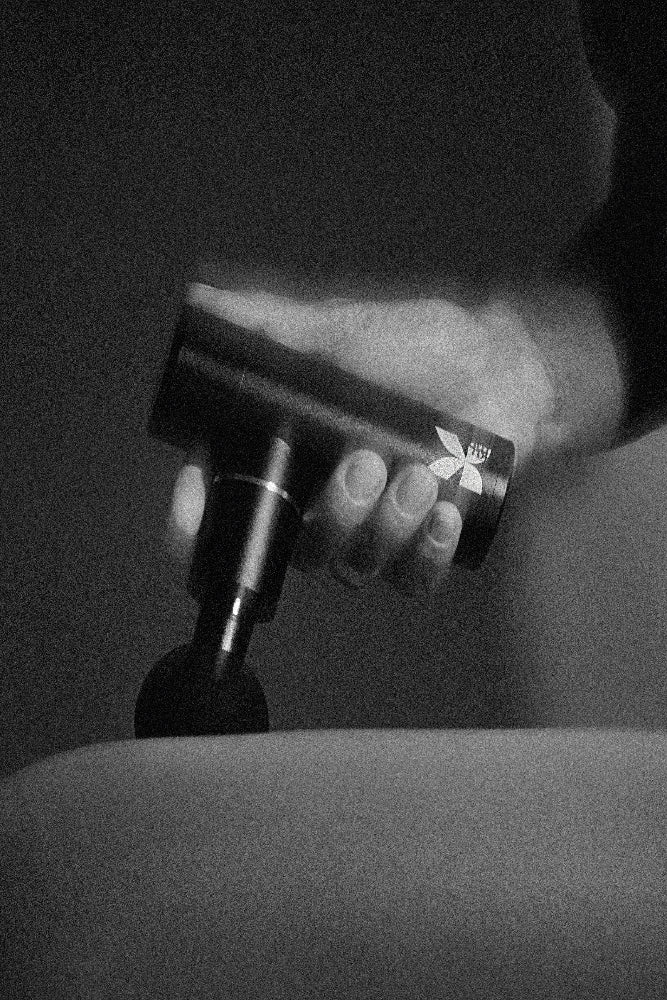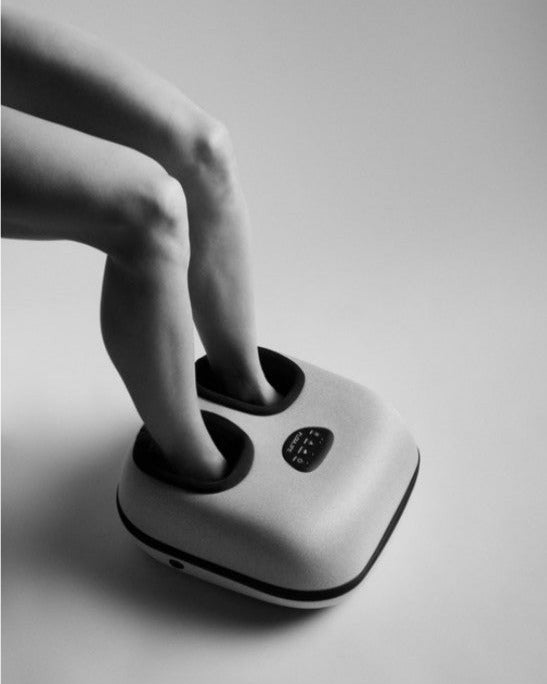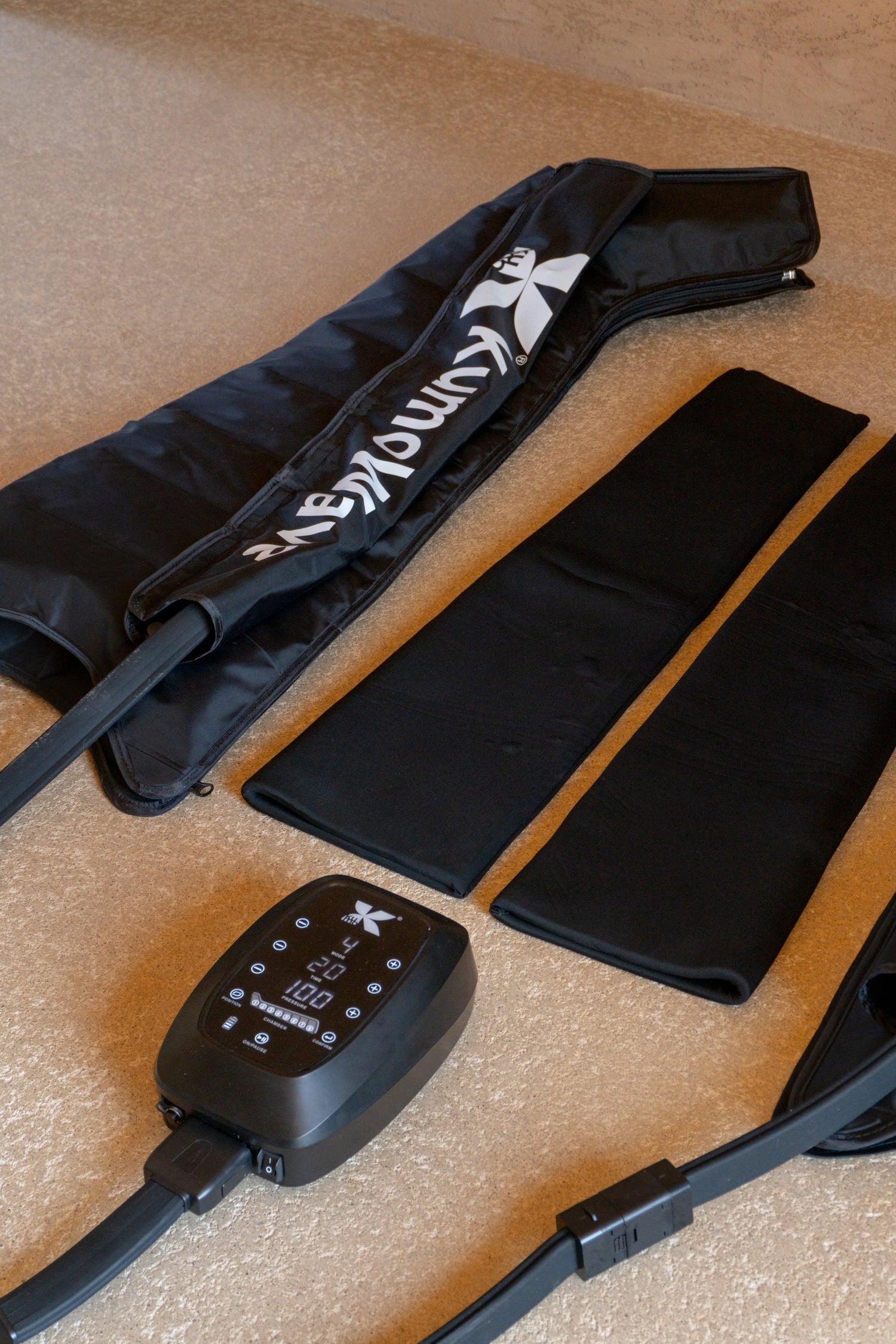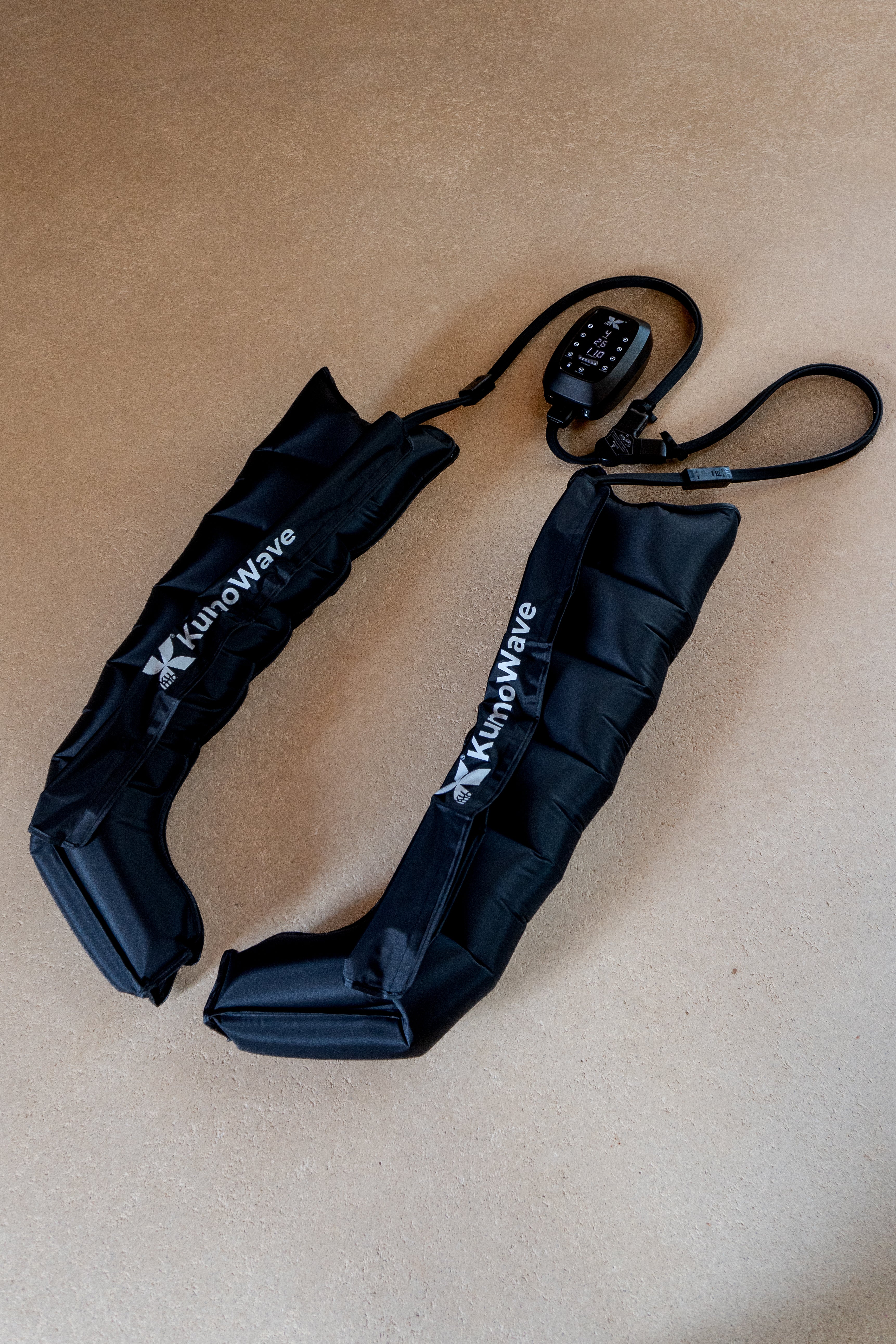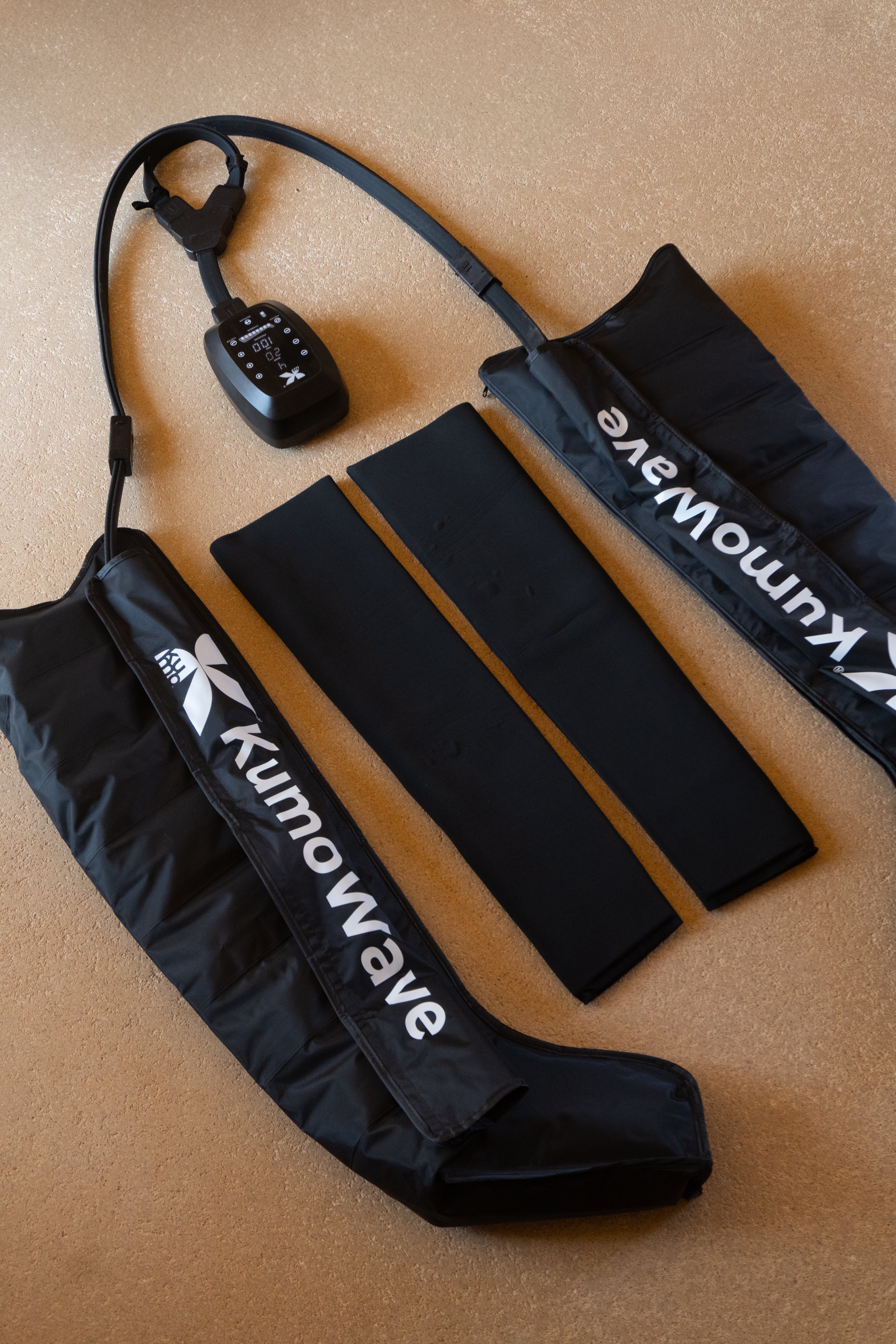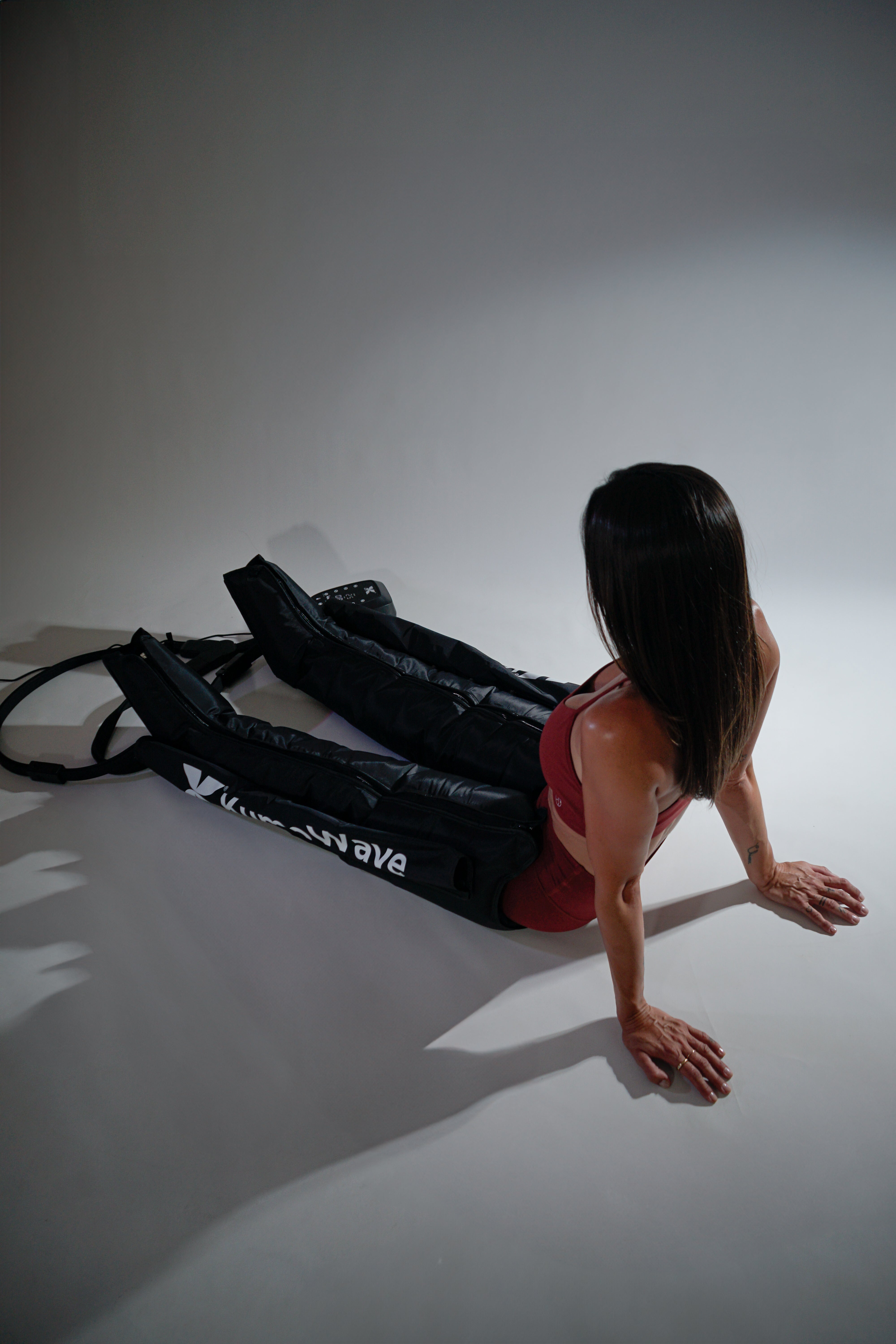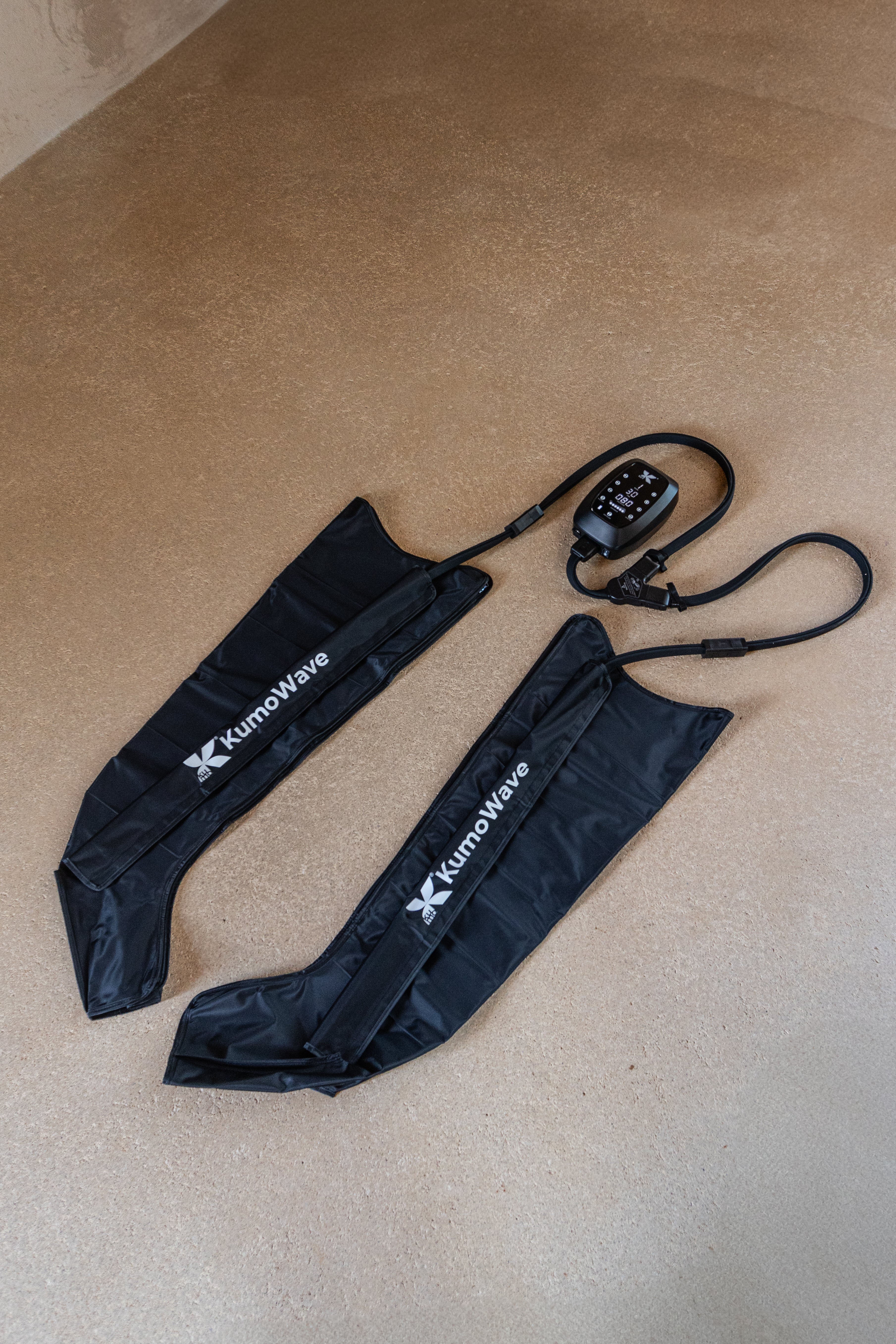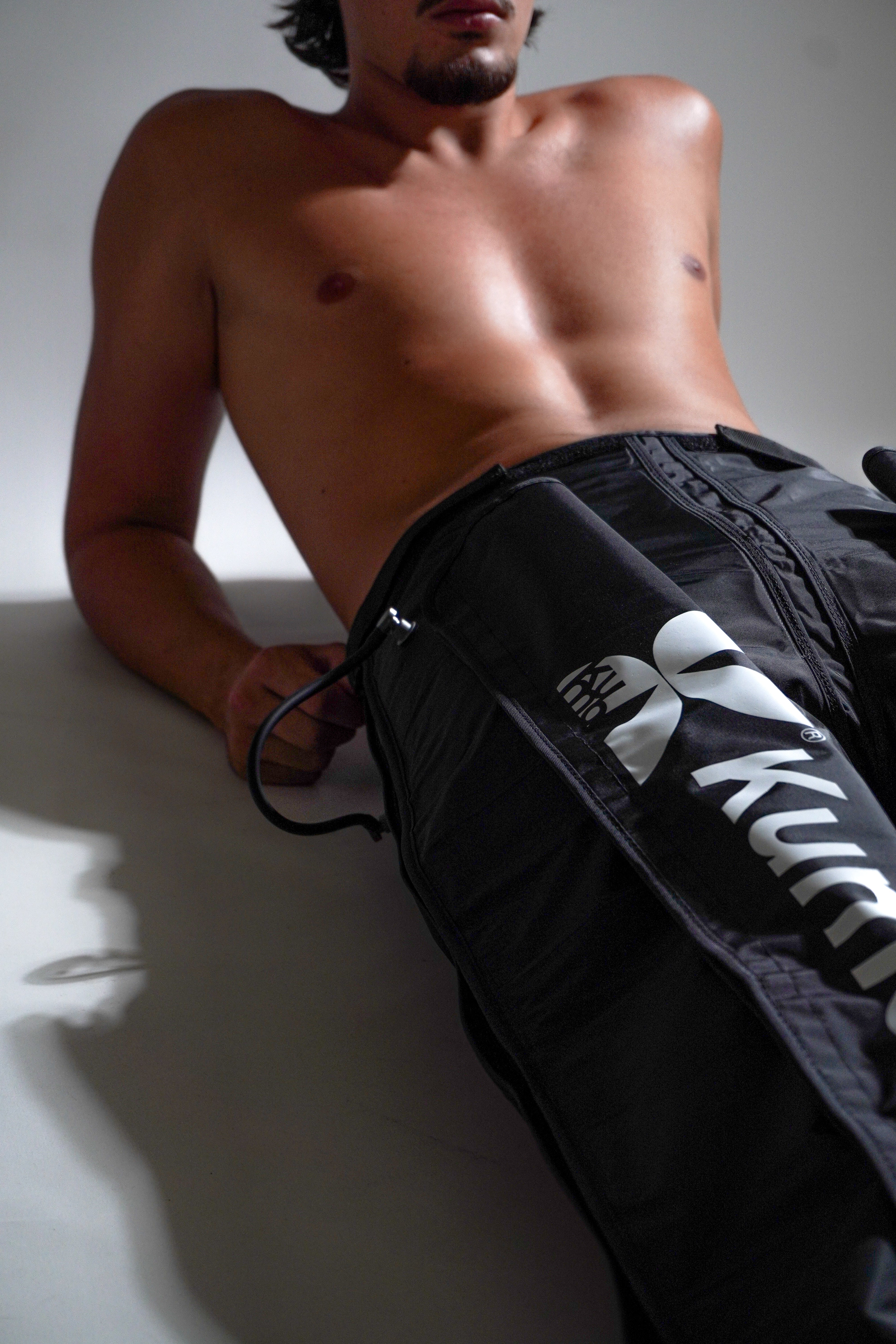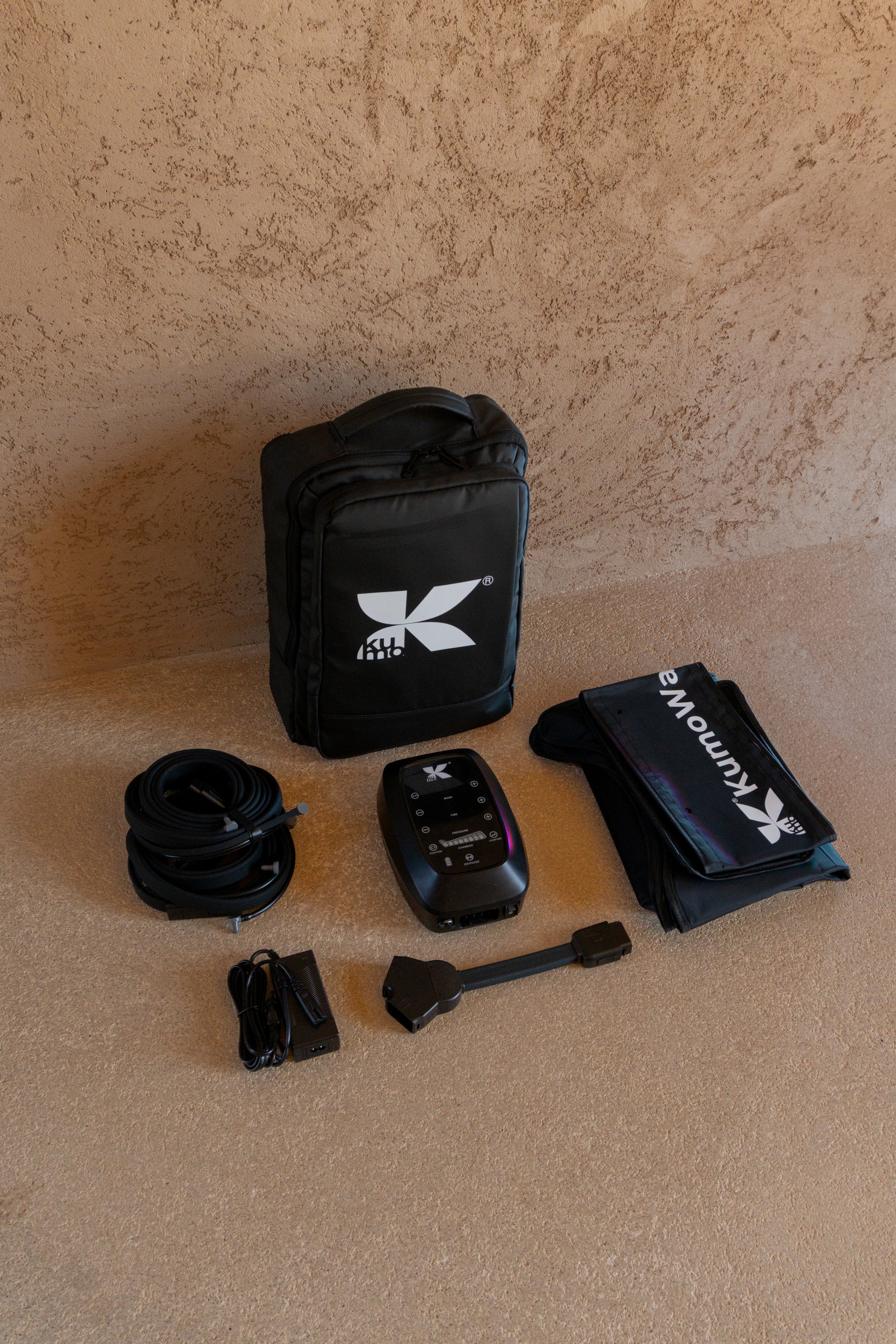Pressotherapy boots: when not to use them and how to do it safely. If you're looking to know who should avoid this therapy, what risks exist, and what care you should follow to enjoy it safely, here's a clear and practical guide.
Coming soon
- Pressotherapy helps improve venous and lymphatic return, but it is not for everyone.
- Absolute contraindications: deep vein thrombosis, decompensated heart failure, severe arterial ischemia, active infection, open wounds and acute trauma.
- Warning signs: severe pain, numbness, paleness/blueness, shortness of breath, or chest pain: stop and seek medical advice.
- Safe use: short sessions at first, moderate pressure, no wrinkles, raised legs and checked skin.
- Care: Regular cleaning, thorough drying, storage without bending tubes and checking zippers.
| Scenery | Quick recommendation |
|---|---|
| Suspected deep vein thrombosis | Do not use and go to the emergency room |
| Varicose veins without pain or acute inflammation | Possible use with moderate pressure and vigilance |
| Pregnancy | Prior consultation with your health professional |
| Diabetic neuropathy | Caution due to decreased sensitivity; medical supervision |
| Wounds, dermatitis or infection | Avoid until completely healed |
What are pressotherapy boots and how do they work?
Pressotherapy boots apply intermittent pneumatic compression through chambers that inflate and deflate sequentially. This cycle pushes blood and lymph from the feet toward the heart, promoting venous return, reducing edema, and relieving the feeling of heaviness in the legs.
There are different inflation patterns (sequential, peristaltic) and pressure levels. The goal is firm but comfortable compression, never causing pain or numbness. To understand its clinical role, you can review this description of intermittent pneumatic compression from the Cleveland Clinic: Intermittent Pneumatic Compression. Kumo , we integrate design and technology to facilitate safe and effective recovery at home.
Proven benefits and limits of pressotherapy
Intermittent compression is supported in medical settings to improve venous return, reduce edema, and aid in the prevention of thromboembolism in controlled settings. The European guidelines for chronic venous insufficiency (CVI) list its usefulness in selected cases when elastic stockings are insufficient or poorly tolerated (ESVS, 2022): ESVS Guidelines 2022.
For athletes and active users, boots can alleviate perceived strain, stiffness, and swelling after exercise, facilitating the feeling of light legs. However, they don't replace key habits such as daily exercise, hydration, sleep, and a balanced training and recovery plan.
Contraindications and important precautions
Although they are safe for many people, there are situations in which they should not be used or require professional authorization.
Absolute contraindications
Avoid pressotherapy and seek medical evaluation if you have:
- Deep vein thrombosis (suspected or diagnosed) or recent pulmonary embolism.
- Decompensated heart failure or acute pulmonary edema.
- Severe peripheral arterial ischemia (advanced arterial disease with rest pain or ischemic ulcers).
- Active infection in the leg (cellulitis, erysipelas), open wounds or uncovered ulcers.
- Fractures, severe sprains or acute trauma in the treated area.
These situations are covered in clinical guidelines and independent reviews; for information, see Cleveland Clinic: Compression Therapy (IPC).
Precautions (prior consultation)
Use with caution and under professional guidance if you have:
- Stable heart failure, kidney or liver disease with fluid retention.
- Peripheral neuropathy (e.g., in diabetes) or reduced skin sensitivity.
- Dermatological disorders (dermatitis, eczema), fragile skin or tendency to bruise.
- Painful varicose veins or recent superficial thrombophlebitis.
- Pregnancy or immediate postpartum.
- Anticoagulation: not a contraindication per se, but requires clinical supervision.
If you have personal questions or a complex medical history, it is best to contact Kumo or with your healthcare professional for a tailored recommendation.
Warning signs during or after a session
Stop the session and seek help if you notice:
- Severe pain, persistent tingling, numbness, or weakness.
- Changes in skin color (marked pallor or bluish tone), distal coldness.
- Sudden increase in swelling above the treated area.
- Shortness of breath or chest pain (warning signs of DVT/PE). Useful information: NHS on DVT .
How to wear boots safely
Follow these guidelines to minimize risks and maximize benefits.
Before you start
- Choose the correct size and fit the boots without creases; close zippers without excessive tension.
- Check your skin: avoid use if there are wounds, irritation or infection.
- Start with short sessions (e.g., 15–20 minutes) and moderate pressure; gradually adjust according to tolerance and the manufacturer's recommendations.
- Hydrate and, if you can, elevate your legs slightly.
Practical advice: prioritize comfort. “Firm but comfortable” compression is the goal; pain or numbness indicates excessive pressure.
During the session
- Maintain a relaxed posture, without crossing your legs, and avoid falling asleep.
- Observe feet and toes: they should retain normal color and temperature.
- If you notice discomfort, reduce pressure or stop the session.
After the session
- Walk for 2–3 minutes or perform gentle joint mobility to consolidate circulatory return.
- Drink water and avoid immediate extreme heat (very hot baths or sauna).
- Schedule your sessions with reasonable consistency (e.g., 3–5 times/week depending on your goal and tolerance). Discover options in our pressotherapy collection .
Boot care and maintenance
Good maintenance increases equipment life and safety.
Hygiene and cleanliness
- Clean surfaces with a soft cloth and mild soap; disinfect with compatible products. Avoid bleach or harsh alcohols.
- Allow to air dry completely before storing. Do not submerge the boots or the pneumatic system.
Daily use and personal hygiene
- Wear thin socks or a light textile layer to protect your skin and the inside of your gear.
- Do not share boots without first cleaning them, especially if you have sensitive skin.
Storage and review
- Store boots extended or rolled up without forcing them, and without bending the tubes.
- Avoid direct heat, humidity and prolonged sun exposure.
- Check zippers, valves, and hoses periodically. If you detect leaks or problems, contact support .
Who are they suitable for?
- People with heavy legs, mild edema, or prolonged standing/sitting.
- Users looking for recovery after exercise, intense series or competitions.
- Frequent travelers: useful before or after long trips to relieve swelling.
- Patients with venous insufficiency or mild lymphedema under professional supervision. The ESVS guidelines (2022) detail usage scenarios for chronic venous disease: see document.
Remember: In hospital settings, intermittent compression is also used for thrombosis prevention in selected cases, as reported in Cochrane reviews: Cochrane Library – CPI and thrombosis .
Integrate pressotherapy into your recovery routine
Effective recovery is multidimensional. Combine tools intelligently.
With red light/LED for fabric and sleep
Photobiomodulation with red and near-infrared light is used for muscle recovery and sleep hygiene. Use it at consistent times, complementing the mechanical release of pressotherapy. Explore our LED light therapy .
With percussion massage to release tension
Percussion massage helps relax specific areas with tension points. Use it beforehand to "wake up" the muscles or afterward for specific areas that remain stiff, avoiding pressure on acute pain. Learn about the KumoPulse Air .
If you don't know where to start, our team can guide you in the most appropriate combination for your objectives from the philosophy of Kumo .
FAQ
How long should a pressotherapy boot session last?
For most healthy users, starting with 15–20 minutes is a good guideline. If you're looking for relief from tired legs or post-workout recovery, 20–30 minutes may be sufficient. Adjust based on your tolerance, the equipment program, and your body's response. Avoid sessions so long that they cause numbness or discomfort. For specific medical conditions, follow your healthcare professional's guidelines.
What is the right pressure to start with?
The "best" pressure is the lowest level that provides relief without discomfort. Start with the moderate level recommended by the manufacturer and progress gradually. The sensation should be firm but never painful or numb. Keep in mind that tolerance varies depending on leg thickness, skin condition, and individual sensitivity. If you are unsure due to a pre-existing condition, consult a doctor before increasing the intensity.
Can I use pressotherapy if I have varicose veins?
For varicose veins without acute inflammation or severe pain, many people tolerate intermittent compression well and find relief. Even so, it's a good idea to start with moderate pressure and short sessions, monitoring the response. If you have had thrombosis, recent phlebitis, ulcers, or ongoing pain, seek medical evaluation. Clinical guidelines contemplate its use in selected cases when other measures are insufficient.
Is it safe after intense exercise or a run?
Yes, it's often a useful tool for relieving stiffness and heavy legs. Use it after hydration and cooling, with moderate pressure, avoiding pain or numbness. Combine it with gentle mobility and restful sleep for consistent results. If there is acute pain, persistent cramping, or a suspected injury, prioritize professional evaluation before applying compression.
Can it be used during pregnancy?
Pregnancy is not an absolute contraindication, but it is a precautionary measure. Intermittent compression can relieve swelling and heaviness, although the indication should be individualized, especially if there are marked varicose veins, a history of thrombosis, or gestational hypertension. Consult with your gynecologist or midwife to adjust the time, pressure, and frequency.
To take into account
- Pressotherapy isn't for everyone: identify contraindications and consult if you have any questions.
- Start with short sessions and moderate pressure; prioritize comfort and safety.
- Keep your skin healthy and your equipment clean; check hoses, valves, and zippers.
- Integrate key habits: hydration, movement, sleep, and, if appropriate, red light or massage.
- If you experience pain, numbness, or any warning symptoms, stop and seek medical attention.
Take the next step with smart, aesthetic recovery. Explore the Kumo pressotherapy collection or contact us for personalized advice from Kumo .
